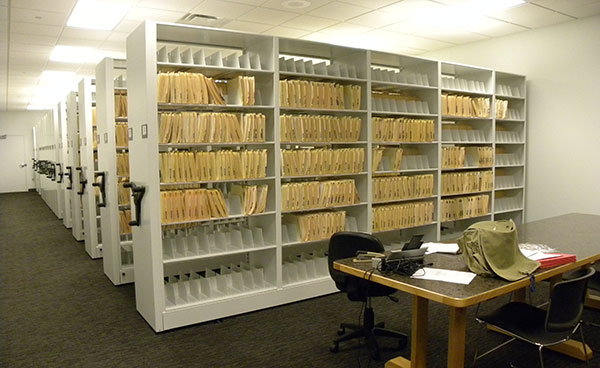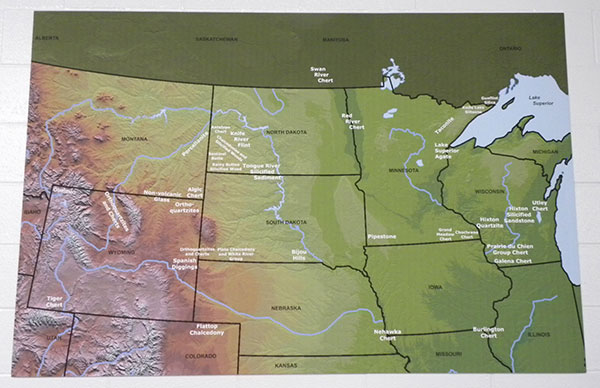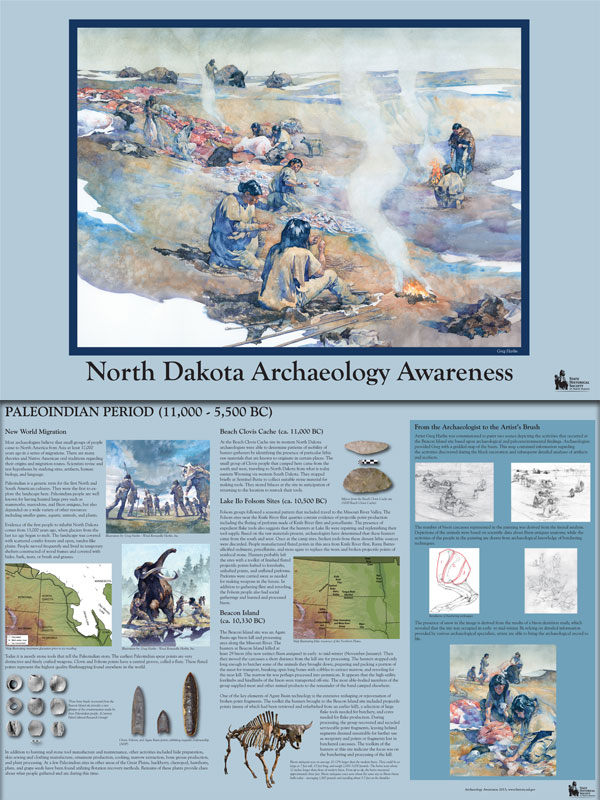When people find out archaeology is my profession, they invariably ask where I have been digging lately. Answer: Nowhere. I have been working in the office. Response: Oh. What do you do?
Today, archaeologists may undertake all sorts of tasks—fieldwork (survey, site recording, and excavation), lab work (sorting and analysis), researching archives, report writing, and curation are some. One of my primary duties is processing, mapping, and maintaining files for sites recorded in North Dakota by other professional archaeologists. In so doing I work daily with contract archaeologists and federal, state, and tribal government employees. Other activities pair me with researchers, students, and the general public.

The Cultural Resource Room is the repository for site records. Part of my job is to review and map the information in each record.
In recent years, I have had the privilege of creating maps for colleagues which were used in presentations, journal articles, and a book. Other maps I produced appear on archaeology-themed posters. For example, a large poster of regional lithic sources hangs in the Archaeology Lab. Located above the lithic comparative collection, it is referenced by staff, researchers, and lab volunteers.

Map of lithic sources in the north-central United States.
In addition to making maps, I enjoy assisting with design and production of posters. Fortunately, the Archaeology and Historic Preservation Division has a room devoted to production of multi-media projects—posters, signs, brochures, photos, videos, audio recordings, etc. Furnished with a MAC, PC, scanners, and a plotter, this room allows staff to use necessary equipment without purchasing software for multiple computers.

The front and back sides of the Paleoindian Period poster.
The posters we produce are one way in which we share our knowledge. Posters produced to date include: Double Ditch Indian Village; Huff Indian Village; Menoken Village; Fort Clark Trading Post; Knife River Flint Quarries; and Paleoindian Period. One for the Plains Archaic Period is in the works now. These are free and available upon request.
Archaeology is the study of the material culture of past peoples. I believe strongly that archaeologists (working outdoors or indoors) need to share what we learn so everyone may appreciate history. Working in the Archaeology and Historic Preservation Division at the State Historical Society of North Dakota allows me to do just that.

